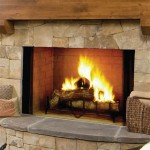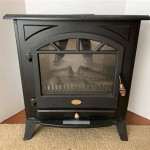How To Clean Ashes From Fireplace
Maintaining a fireplace necessitates regular cleaning to ensure efficient operation and prevent potential hazards. The accumulation of ashes, while a natural byproduct of burning wood, can become problematic if left unattended. This article provides a comprehensive guide to safely and effectively removing ashes from a fireplace, addressing necessary precautions, required equipment, and step-by-step procedures.
Preparing for Ash Removal: Safety First
Prior to commencing the ash removal process, several safety measures must be implemented. Ash can retain heat for extended periods, even days after the last fire. Handling hot ashes presents a significant burn risk. Furthermore, the fine particulate matter in ash can become airborne, posing respiratory hazards. Therefore, adequate preparation is paramount.
The foremost precaution involves ensuring the ashes are completely cool. Allow a minimum of 24 hours, and preferably 48 hours, to elapse after the last fire before attempting to remove any ashes. Touching the ashes or surrounding firebox with a gloved hand is recommended as a simple test to confirm that no residual heat is present.
Wearing appropriate personal protective equipment (PPE) is critical. This includes heavy-duty work gloves to protect hands from potential cuts and abrasions from jagged edges of burnt wood or metal within the ash. A dust mask or respirator is essential to prevent inhalation of fine ash particles. Eye protection, such as safety glasses or goggles, should also be worn to shield the eyes from airborne debris.
Ventilation is also an important consideration. Opening windows and doors will facilitate airflow and help to disperse any ash that becomes airborne during the cleaning process. If weather conditions permit, performing the cleaning with the fireplace damper open will allow particulate matter to be drawn up and out of the chimney, although this is less effective than relying on cross-ventilation within the room.
Protecting the surrounding area is also a vital step. Laying down a drop cloth or old newspapers around the fireplace opening will prevent ash from scattering onto the floor. This is especially important for carpeted surfaces, as embedded ash can be difficult to remove. Furniture in close proximity to the fireplace should also be covered or moved to prevent dust accumulation.
Required Equipment for Effective Ash Removal
Having the right tools readily available will streamline the ash removal process and minimize mess. The specific equipment required will depend on the size and design of the fireplace, as well as the preferred method of ash disposal. However, certain core items are generally necessary.
A metal shovel is indispensable for scooping ashes from the firebox. A small, sturdy shovel with a rounded or slightly pointed blade is ideal for reaching into corners and removing compacted ash. Avoid using plastic shovels, as they can melt or warp if exposed to residual heat.
A metal container with a lid is essential for safely storing and disposing of the ashes. A galvanized steel ash can is the preferred option due to its fire-resistant properties and durability. Plastic containers should never be used, as they pose a fire hazard. The container should be of sufficient size to accommodate the amount of ash typically generated between cleanings.
A brush and dustpan are useful for collecting any spilled ash and sweeping up debris around the fireplace opening. A fireplace brush with stiff bristles is particularly effective for removing ash that has adhered to the firebox walls. A vacuum cleaner equipped with a HEPA filter is also a viable option for cleaning up fine ash particles, but should only be used after the majority of the ash has been removed with a shovel.
Optional equipment that can further enhance the cleaning process includes a fireplace poker for breaking up clumps of ash and a sifting screen for separating out larger pieces of unburnt wood or charcoal. A shop vacuum specifically designed for ash removal can also be a worthwhile investment, as these vacuums are equipped with filters that are more effective at capturing fine ash particles than standard household vacuums.
Step-by-Step Ash Removal Procedure
Once the necessary safety precautions have been taken and the required equipment has been assembled, the actual ash removal process can commence. The following steps outline a systematic approach to effectively cleaning ashes from a fireplace.
Begin by gently scooping the ashes from the firebox using the metal shovel. Start at the back of the fireplace and work your way forward, taking care not to stir up excessive dust. Avoid scraping the shovel against the firebox walls, as this can damage the masonry or metal lining. If large pieces of unburnt wood or charcoal are present, use the fireplace poker to break them up into smaller pieces before scooping them up.
Carefully deposit the scooped ashes into the metal ash can. Avoid overfilling the can, as this can make it difficult to close the lid securely. If using a sifting screen, pour the ashes through the screen to separate out any larger pieces of unburnt material. These pieces can be returned to the firebox for subsequent burning.
Once the majority of the ashes have been removed, use the fireplace brush to sweep the firebox walls and floor. Pay particular attention to corners and crevices where ash may have accumulated. If using a vacuum cleaner, ensure that it is equipped with a HEPA filter and that the hose is properly attached. Vacuum the firebox thoroughly, taking care to reach all areas.
After the firebox has been cleaned, use the brush and dustpan to sweep up any spilled ash around the fireplace opening. If necessary, use a damp cloth to wipe down the surrounding surfaces. Ensure that the drop cloth or newspapers are carefully folded up and disposed of properly.
Finally, securely close the lid of the metal ash can and store it in a safe location away from flammable materials. Properly dispose of the ashes according to local regulations. In many areas, ashes can be disposed of in the regular trash after they have cooled completely. However, some municipalities require ashes to be disposed of at a designated facility. Consult with the local waste management authority for specific guidelines.
Regular ash removal is crucial for maintaining a safe and efficient fireplace. By adhering to the recommended safety precautions, utilizing the appropriate equipment, and following the outlined step-by-step procedure, individuals can effectively manage fireplace ashes and ensure the continued enjoyment of their fireplace.

How To Properly Remove Ash From Your Fireplace Vertical Chimney Care

Fireplace Ash A Great Glass Cleaner Urban Overalls

Fireplace Spring Cleaning Removal Of Ash And Residue

Fireplace Ashes Cleaning The Blog At Fireplacemall

Fireplace Cleanup And Wood Stove Chimneys Com

Fireplace Ash Dump Service Full Chimney

Fireplace Ashes Cleaning The Blog At Fireplacemall

How To Properly Clean Ashes Out Of Your Fireplace

How To Clean Your Fireplace With An Ash Vacuum Reviewed

Fireplace Ash Disposal Advice Atlanta Ga Chimney Sweeps
Related Posts








